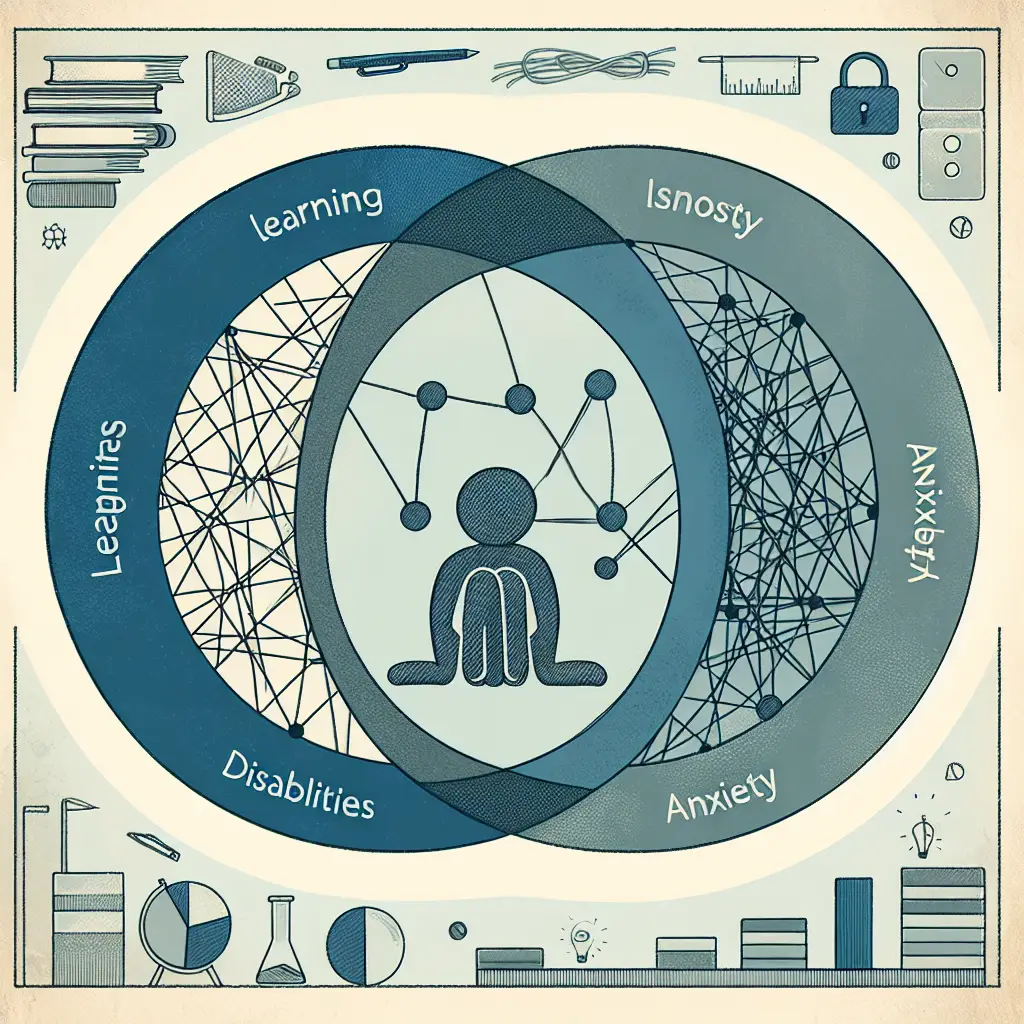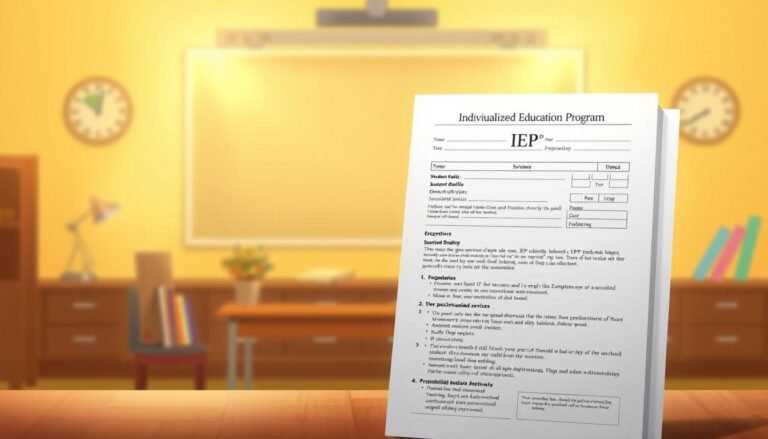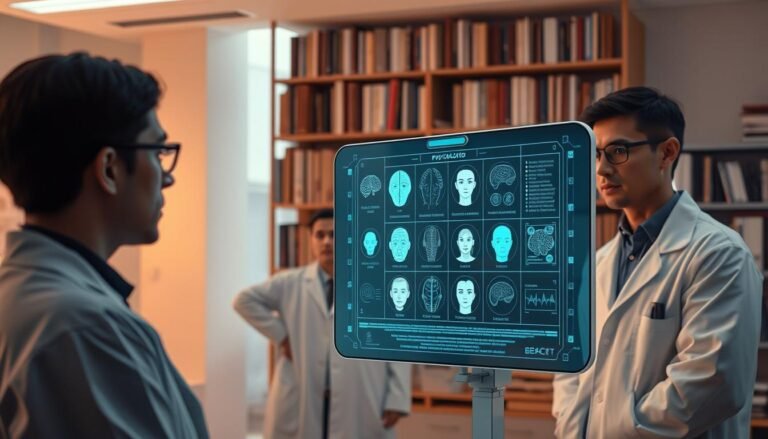
The Overlap Between Learning Disabilities and Anxiety: Understanding the Hidden Struggles
Introduction
Imagine sitting in a classroom, staring at a piece of paper filled with what feels like an indecipherable code. Your mind races, your heart pounds, and a sense of panic washes over you. For many, this isn’t just a moment of stress—it’s a reality shaped by the delicate interplay of learning disabilities and anxiety. The overlap between learning disabilities and anxiety: understanding the hidden struggles is crucial for educators, parents, and students themselves as they navigate these challenging waters. This article delves deep into how these two conditions intertwine, often leading to significant hurdles that are not only hidden but also deeply felt in the day-to-day lives of those affected.
The Interconnectedness of Learning Disabilities and Anxiety
What Are Learning Disabilities?
Learning disabilities are neurological disorders that affect the brain’s ability to receive, process, or communicate information. Common learning disabilities include dyslexia (difficulty with reading), dyscalculia (difficulty with math), and dysgraphia (difficulty with writing). These conditions can impact a student’s performance and self-esteem, creating an environment ripe for anxiety.
Understanding Anxiety Disorders
Anxiety disorders encompass a range of conditions, including generalized anxiety disorder (GAD), social anxiety disorder, and specific phobias. Symptoms may include excessive worry, avoidance behavior, and physical manifestations like restlessness or fatigue. For individuals with learning disabilities, anxiety can heighten feelings of inadequacy and lead to academic struggles.
The Overlap Between Learning Disabilities and Anxiety: A Vicious Cycle
Research shows that children with learning disabilities are at a significantly higher risk for developing anxiety disorders. This overlap manifests as a vicious cycle where academic challenges lead to anxiety, and anxiety, in turn, exacerbates academic difficulties. A study conducted by the Learning Disabilities Association of America highlighted that nearly 40% of students with learning disabilities also experience anxiety disorders, emphasizing the need for a nuanced understanding of their struggles.
Case Study: Emily’s Journey
Emily, a 10-year-old with dyslexia, always found reading to be intimidating. Her classmates seemed to breeze through the texts, while every word felt like a puzzle to her. This feeling morphed into anxiety, particularly around reading assignments. The fear of embarrassment led Emily to avoid reading out loud at all costs, significantly impacting her grades and social interactions. Emily’s story illustrates how the overlap between learning disabilities and anxiety: understanding the hidden struggles demands personalized intervention strategies.
Signs and Symptoms of Anxiety in Students with Learning Disabilities
Identifying anxiety in students with learning disabilities can be tricky. Here, we outline some common signs and symptoms:
| Signs of Anxiety | Relevance to Learning Disabilities |
|---|---|
| Frequent avoidance behavior | Students may dodge assignments or social interactions due to fear of failure. |
| Physical symptoms (stomach aches, headaches) | Stress-induced physical manifestations are common. |
| Perfectionist tendencies | A student might feel intense pressure to perform perfectly, stemming from past academic struggles. |
| Low self-esteem | Students may internalize failure, leading to profound feelings of inadequacy. |
The Psychological Framework: Why the Overlap Exists
Understanding the psychological framework that encourages the overlap between learning disabilities and anxiety allows educators and caregivers to foster empathy and insight.
- Fear of Failure: Students with learning disabilities often experience failure more frequently, impacting their self-worth.
- Social Comparisons: They may feel isolated and misunderstood compared to peers, fostering feelings of anxiety.
- Overwhelm of Academic Tasks: The cognitive load faced by students can lead to increased stress and anxiety.
Strategies for Support: Bridging the Gap
Educational Tools and Techniques
Differentiated Instruction: Utilize varied teaching methods to address different learning styles, ensuring that all students grasp concepts effectively, reducing anxiety.
Positive Reinforcement: Encourage effort rather than just outcomes to cultivate a positive learning environment.
Mindfulness Practices: Integrate activities such as meditation and breathing exercises to help students manage anxiety in real-time.
- Collaborative Learning: Encourage group activities that provide social support and enhance learning through peer interactions.
Case Study: James and Mindfulness
James, a teenager with ADHD and dyscalculia, struggled in math class, which contributed to his severe anxiety during tests. His school integrated mindfulness practices into their curriculum. Over a semester, James learned to use deep breathing and visualization techniques before tests. This simple strategy transformed his relationship with math, demonstrating that the overlap between learning disabilities and anxiety: understanding the hidden struggles requires both institutional and personal interventions.
The Role of Parents and Caregivers
Engaging families is crucial in supporting children with learning disabilities and anxiety. Some practical strategies parents can employ include:
- Open Communication: Encourage discussions about feelings around learning challenges to foster trust and understanding.
- Seek Professional Help: Consider therapies like cognitive-behavioral therapy (CBT), which can help reframe negative thought patterns.
- Build a Supportive Home Environment: Create a home that prioritizes learning while also celebrating small achievements.
Schools’ Responsibilities: Cultivating a Supportive Environment
Educators play a pivotal role in recognizing and addressing the overlap between learning disabilities and anxiety. Here are several ways schools can help:
- Professional Development: Train educators on recognizing and supporting students with both learning disabilities and anxiety.
- Establish Clear Communication Channels: Ensure that students, parents, and teachers collaborate to create individualized education plans (IEPs).
Personalizing Support for the Individual Learner
Personalization is key when addressing the overlap between learning disabilities and anxiety.
- Tailored Interventions: Adapt strategies and interventions to fit the unique needs of each child to foster positive experiences and outcomes.
- Regular Assessments: Monitor progress and mental health regularly to adapt support as needed.
Conclusion
The overlap between learning disabilities and anxiety: understanding the hidden struggles is more than a mere academic issue; it encapsulates the emotional, social, and developmental challenges faced by students every day. By fostering empathy, implementing targeted strategies, and encouraging open communication, we can create environments that not only support academic success but also build resilience and emotional well-being.
As we continue to shed light on this critical intersection, it’s imperative for parents, educators, and society at large to recognize and address these challenges. Together, we can pave the way for a more inclusive and understanding future.
FAQs
1. What is the most common learning disability associated with anxiety?
The most commonly associated learning disabilities are dyslexia and ADHD. Students with these challenges often experience heightened anxiety due to the academic pressures they face.
2. How can educators identify anxiety in students with learning disabilities?
Educators should watch for signs such as avoidance of tasks, excessive perfectionism, and physical symptoms (e.g., headaches). Open discussions about feelings can also help identify anxiety.
3. Is anxiety treatable in students with learning disabilities?
Yes, anxiety is treatable. Therapeutic interventions such as cognitive-behavioral therapy, mindfulness training, and personalized educational approaches can significantly alleviate anxiety.
4. Can learning disabilities and anxiety improve over time?
With appropriate support and interventions, students can develop strategies to manage both learning disabilities and anxiety effectively. Progress often comes through personalized learning experiences and therapeutic techniques.
5. What resources are available for parents of children with learning disabilities and anxiety?
Parents can access various resources, including support groups, educational therapy, and informational websites focused on learning disabilities and mental health. Local schools and community centers may also have support systems in place.
The overlap between learning disabilities and anxiety: understanding the hidden struggles empowers both individuals and the wider community to create nurturing environments that foster growth, understanding, and success.
















